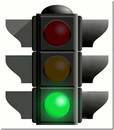Prevention Courses In Schools
Self-defense, safety and awareness | |
| For many years, the prevention and self defence work in schools has been one of points of focus of the Wing Tsjun International martial arts organisation. The children are taught two forms of self-defence in the class: Physical self-defense Here, the children are given tools with which they can defend themselves. These tools range from exercises to gestures and mimicry, from effective striking, stepping and freeing techniques to addressing passer-by and running away. Psychological / verbal self-defence Through exercises that address strong appearance and the conveying of potentially dangerous situations, the children learn to tackle stressful moments and frightening situations. |  |
The verbal self-defense | |
| By easily understandable case examples, children are taught to view potentially dangerous situations on three levels , so-called safety codes: green, yellow and red. This is how children learn to categorize and escape dangerous situations with the aid of color situations and their gut feelings. Just like with safety lights, they gain the ability to naturally feel when they are safe (green), when they must be careful (yellow) and when they are in danger (red). |  |
The "green" safety light | |
| When our green safety light is on, it means "WE ARE SAFE" and everything is normal. The prevention training strengthens confidence. The goal of this training is, that children always self-responsibly strive to remain in a "green" area and to return to it, should they have left it. |  |
The "yellow" safety light | |
| When our safety light switches to yellow, our instinct or our gut-feeling is saying: "SOMETHING HERE ISN’T RIGHT" and action must be taken. Becoming more aware of danger is a significant part of the class. Yellow, i.e. potentially dangerous situations, must be avoided and children are shown ways to escape such situations as quickly as possible and to strive for the green safety code. |  |
The "red" safety light | |
| As soon as our safety light turns red, we know: "THERE IS DANGER" and we must react quickly. Here we teach so-called "emergency techniques". Children learn, for example in the event of a physical attack, not only effective self-defence techniques, but also the importance of calling for help and sharing their experience after such a situation. |  |
The physical self-defence | |
| The class is held at least at times in gender-split groups and is normally lead by a mixed gender instructors team. This enables us to approach gender specific issues about how to handle violence. The children learn that they must draw a verbal and a bodily barrier as soon as they get into an aggression-charged situation, or if they no longer feel comfortable. Role-plays concerning gestures and mimicry also belong to the programme, as well as the teaching of effective Wing Tsjun self-defence techniques. These techniques are easy to learn and to apply and yet they are far-reaching in effectiveness, without having the need to apply one's own body strength. |  |